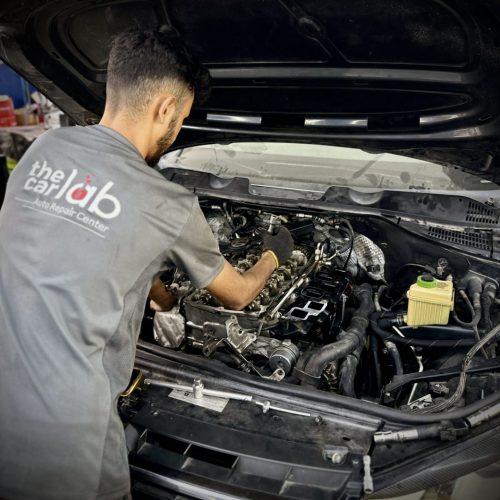Creating an AI chatbot can significantly improve customer interaction, automate repetitive tasks, and provide 24/7 assistance to users. Whether it’s for a business website, e-commerce platform, or a personal project, building a chatbot is now easier than ever. However, it requires careful planning, technical knowledge, and an understanding of user needs.
I’ll guide you through the process with practical steps, relevant insights, and some useful recommendations.
Defining the Purpose and Audience
Before jumping into chatbot development, it’s essential to define the chatbot’s purpose. Will it handle customer queries, offer product recommendations, or provide technical support? Identifying the target audience also helps refine the chatbot’s tone, style, and complexity.
- Customer Support: Automates responses to frequently asked questions and resolves basic concerns.
- E-commerce Assistance: Provides product recommendations and helps with the checkout process.
- Content Delivery: Offers personalized suggestions or curated content.
- Lead Generation: Engages visitors and collects information for further communication.
For instance, if a business wants to create an AI chatbot for customer support, it should prioritize clear communication and quick response times. In contrast, a chatbot designed to assist with e-commerce might need advanced recommendation algorithms to predict user preferences. Chatbots in the adult industry, such as an AI chatbot 18+, often require specialized training to manage explicit conversations while maintaining appropriate boundaries.
Choosing the Right AI Framework
AI frameworks provide the tools needed to design, train, and deploy a chatbot. Depending on the complexity of the chatbot, different frameworks offer varying capabilities.
- Dialogflow by Google: Ideal for natural language processing (NLP) and multi-platform integrations.
- Microsoft Bot Framework: Offers robust support for enterprise-level solutions.
- Rasa: An open-source solution that provides flexibility for developers.
- Botpress: Suitable for building conversational interfaces without extensive programming knowledge.
In comparison to rule-based systems, AI frameworks provide a more dynamic and flexible user experience. AI frameworks allow chatbots to learn from past interactions, improving their responses over time. Meanwhile, platforms like Rasa and Botpress give developers more control over data privacy and customization, making them a popular choice for businesses with specific security needs.
Designing Conversation Flow and Responses
A successful chatbot depends on well-structured conversation flows. Defining conversation paths ensures that users receive relevant responses and remain engaged throughout the interaction.
Creating Intents and Entities
- Intents: Define the user’s goal behind a query (e.g., booking a flight, checking product availability).
- Entities: Extract specific data from the user’s input (e.g., dates, locations, or product names).
Building a Decision Tree
A decision tree helps visualize all potential user inputs and responses. Mapping out these scenarios allows us to predict various conversation outcomes and build a chatbot that feels natural and intuitive.
Still, even the most comprehensive decision tree cannot cover all possibilities. That’s where AI models trained on user data become essential to fill gaps and improve response accuracy. For chatbots catering to adult audiences, designing responses that align with user expectations while avoiding inappropriate content is essential for maintaining compliance and user satisfaction.
Integrating NLP and Machine Learning
Natural Language Processing (NLP) allows the chatbot to interpret and understand user inputs in a conversational manner. NLP algorithms convert text into structured data that the chatbot can analyze and respond to effectively.
Using Pre-Trained NLP Models
- BERT: Ideal for analyzing text and understanding user intent.
- GPT-3 and GPT-4: Capable of generating human-like responses based on context.
In comparison to rule-based models, NLP algorithms offer greater flexibility. They can analyze diverse sentence structures and identify user intents more accurately, which leads to better responses. Moreover, integrating machine learning models enables chatbots to adapt over time by learning from user interactions, ultimately enhancing their conversational capabilities.
Training Your Chatbot for Better Accuracy
Once the initial model is set up, training the chatbot is necessary to refine its accuracy. Chatbots improve by processing large datasets of real conversations and learning from them.
Data Collection and Annotation
Training data should include a variety of user inputs to help the chatbot recognize different phrasing and contexts. Annotating the data ensures that the AI understands the correct intent and entities.
Continuous Improvement with Feedback
User feedback plays a crucial role in improving chatbot performance. Monitoring chatbot interactions allows us to identify gaps and fine-tune responses accordingly. Despite initial training, ongoing improvements ensure that the chatbot remains relevant and accurate. For instance, NSFW AI Chatbot models require careful moderation and refinement to prevent inappropriate responses and maintain compliance with content guidelines.
Adding Personalization and Context Awareness
A chatbot that remembers previous interactions and adapts responses accordingly feels more intuitive and user-friendly. Personalization involves tailoring responses based on user preferences, past queries, and browsing history.
Implementing Context Retention
Context-aware chatbots can follow multi-turn conversations by remembering relevant information across messages. This capability is especially useful for complex queries that require multiple steps to resolve.
Similarly, chatbots that retain user preferences can offer tailored suggestions or recommendations. For instance, an AI chatbot 18+ can customize responses based on previous interactions, ensuring a more engaging and relevant experience for adult-oriented platforms. Context retention also helps minimize user frustration by avoiding repetitive questions or irrelevant responses.
Ensuring Data Privacy and Security
Chatbots often handle sensitive information, making data privacy and security critical aspects of development. Without adequate protection, user data can be vulnerable to breaches.
Encryption and Secure Data Storage
Storing user data securely with encryption protocols prevents unauthorized access. Moreover, ensuring compliance with data protection regulations like GDPR helps build trust with users.
User Consent and Transparency
Clearly informing users about data collection and seeking their consent creates transparency. Chatbots should always offer users the option to opt out or delete their data when requested. Similarly, businesses handling sensitive content should ensure that chatbot models do not retain explicit conversations or user data beyond necessary timeframes.
Testing and Debugging for Optimal Performance
Testing ensures that the chatbot performs as intended across different scenarios. By simulating real-world conversations, we can identify errors and refine the chatbot’s responses.
Functional and Usability Testing
- Functional Testing: Verifies whether the chatbot fulfills intended tasks.
- Usability Testing: Ensures a smooth and intuitive user experience.
Load and Stress Testing
Testing the chatbot under high-traffic conditions assesses its scalability and ensures smooth performance during peak usage. Stress testing helps identify bottlenecks and points of failure that may affect the chatbot’s responsiveness. In high-traffic environments, ensuring that the chatbot maintains quick response times can significantly impact user satisfaction.
Deploying and Integrating with Platforms
Once the chatbot is fully trained and tested, it’s ready for deployment. Depending on the target audience, chatbots can be integrated with various platforms, including:
- Websites: Direct integration allows chatbots to assist visitors on business or personal websites.
- Social Media Platforms: Chatbots can engage with users through platforms like Facebook Messenger and WhatsApp.
- Mobile Apps: Mobile-based chatbots enhance app usability and improve user retention.
Subsequently, regular updates and performance monitoring ensure that the chatbot continues to meet user expectations and adapt to changing needs. For instance, chatbots used in adult platforms require ongoing monitoring to prevent inappropriate responses and ensure compliance with platform policies.
Handling NSFW and Sensitive Conversations
For platforms catering to mature audiences, managing NSFW content requires specialized attention. An NSFW AI Chatbot must be trained to recognize and handle explicit content appropriately. Implementing content moderation and establishing boundaries ensures that such chatbots maintain a safe environment while respecting user preferences.
Admittedly, training models for sensitive content requires more nuanced datasets and refined algorithms to strike the right balance between engagement and moderation. Businesses operating in adult industries should also ensure that their chatbots comply with legal and regulatory guidelines to avoid potential complications.
Evaluating Performance and Gathering Insights
After deployment, monitoring chatbot performance helps us identify areas for improvement. Key performance indicators (KPIs) provide valuable insights into user satisfaction and chatbot effectiveness.
Important KPIs to Track
- User Engagement: Measures how frequently users interact with the chatbot.
- Completion Rate: Tracks the percentage of conversations that successfully fulfill user intent.
- Error Rate: Identifies incorrect or irrelevant responses.
Evaluating performance through these KPIs helps us refine the chatbot’s responses, ensuring that it continues to meet user needs. Similarly, analyzing error patterns and user drop-off points provides actionable insights to optimize chatbot performance.
Future Enhancements and Scalability
As AI models evolve, new opportunities arise for improving chatbot capabilities. Chatbots can be upgraded to include voice interactions, multilingual support, and advanced predictive analytics.
Even though initial deployments might focus on text-based interactions, adding voice functionality or expanding language support can significantly improve user engagement. Meanwhile, incorporating predictive analytics helps chatbots anticipate user needs and offer proactive solutions. Moreover, AI chatbots designed for diverse industries can expand their functionality by integrating with CRM systems, payment gateways, and third-party APIs to offer a seamless experience.
Final Thoughts
Building an AI chatbot requires a balance between technical expertise and user-centric design. From defining the purpose and selecting the right framework to training and personalizing the chatbot, every step plays a critical role in its success. Security measures, regular testing, and continuous improvement ensure that the chatbot performs well in diverse scenarios. Moreover, keeping an eye on performance metrics helps identify areas for further refinement.
In comparison to traditional support systems, AI chatbots provide a more interactive and dynamic experience, catering to modern user expectations. As AI continues to evolve, chatbots will become even more sophisticated, offering personalized, efficient, and engaging interactions.












